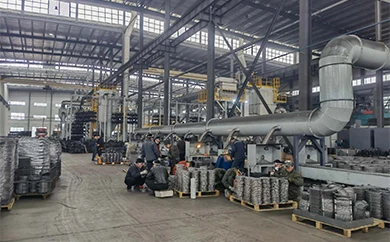
types of woks
The Different Types of Woks A Culinary Essential
Woks are a fundamental cooking instrument in many Asian kitchens, known for their versatility, high heat capabilities, and unique shape. Originally from China, woks have gained worldwide popularity due to their ability to handle a variety of cooking techniques, including stir-frying, deep frying, boiling, and steaming. Understanding the different types of woks available can help cooks of all levels make informed decisions about which one best suits their culinary needs.
1. Traditional Carbon Steel Wok
The traditional carbon steel wok is a favorite among professional chefs and home cooks alike. It heats up quickly and distributes heat evenly, making it ideal for high-temperature cooking methods like stir-frying. Carbon steel woks require seasoning before use, a process similar to treating cast iron pans. This seasoning creates a natural non-stick surface over time and enhances the flavor of cooked dishes. They are lightweight, making them easy to maneuver during cooking.
The downside to carbon steel is that they can rust if not properly cared for, so immediate cleaning and drying are essential after each use. They are, however, quite affordable and often the go-to choice for those seeking genuine wok cooking without breaking the bank.
2
. Cast Iron WokCast iron woks are renowned for their excellent heat retention and even cooking. These woks are particularly beneficial for dishes that require long cooking times or simmering. While they take longer to heat up compared to carbon steel options, cast iron woks can maintain temperature, which is crucial for certain recipes.
One of the notable benefits of cast iron is its durability and longevity. However, like carbon steel, cast iron woks also require seasoning to maintain their non-stick properties and prevent rusting. Due to their weight, they may be a bit cumbersome for some cooks, but many love their classic ’workhorse’ quality.
3. Non-Stick Wok
Non-stick woks, typically coated with Teflon or ceramic, provide an easy cooking option for those who want to avoid the hassle of seasoning and extra maintenance. These woks allow food to slide out effortlessly, making them particularly useful for beginners or those less comfortable with traditional wok techniques.
types of woks

However, non-stick woks don't handle high heat as well as their carbon steel or cast iron counterparts, which can limit their use for specific cooking methods like stir-frying. Additionally, the coatings can wear down over time, and some non-stick woks are not suitable for use with metal utensils, which can restrict their versatility in cooking.
4. Stainless Steel Wok
Stainless steel woks are another option, prized for their resistance to rust and easy maintenance. They do not require seasoning and can withstand high heat. While they do not heat as evenly as carbon steel or cast iron, many manufacturers have developed stainless steel woks with aluminum cores, enhancing heat distribution.
They are also dishwasher-safe, making clean-up a breeze. Some may find they require more oil when cooking to prevent sticking, which can be an important consideration for health-conscious cooks.
5. Electric Wok
Electric woks offer convenience and versatility, especially for those who may not have a stovetop or prefer an alternative cooking method. These woks come with adjustable temperature controls, making them suitable for a range of dishes. They are easy to use and can be a great addition to a buffet or potluck setup.
However, electric woks may not reach the high temperatures achieved by traditional woks on stovetops, potentially limiting their effectiveness in stir-frying.
Conclusion
Choosing the right type of wok largely depends on cooking style, preferences, and care willingness. Traditional carbon steel woks are adored for their traditional characteristics and cooking versatility, while cast iron woks shine in heat retention. Non-stick and stainless steel woks offer convenience and ease of use, catering to beginner cooks or those looking for low-maintenance options. Electric woks provide a modern twist to traditional cooking, appealing to a tech-savvy generation. Each type of wok brings its strengths to the table, and the perfect choice ultimately depends on the individual cook's needs and preferences. With the right wok in hand, the art of cooking can be both accessible and enjoyable.
-
Season Cast Iron Perfectly with GPT-4 Turbo TipsNewsAug.01,2025
-
High Quality Cast Iron Cookware - Baixiang County Zhongda MachineryNewsAug.01,2025
-
Premium Cast Iron Pan: Durable & Perfect HeatNewsAug.01,2025
-
High Quality Kitchen Durable Black Round Cast Iron Cookware Pancake Crepe Pan-Baixiang County Zhongda Machinery Manufacturing Co., Ltd.NewsAug.01,2025
-
Cast Iron Cookware - Baixiang County Zhongda Machinery | Nonstick, Heat ResistanceNewsAug.01,2025
-
High Quality Kitchen Durable Black Round Cast Iron Cookware - Baixiang County Zhongda Machinery | Non-Stick, Heat Retention, DurableNewsJul.31,2025


